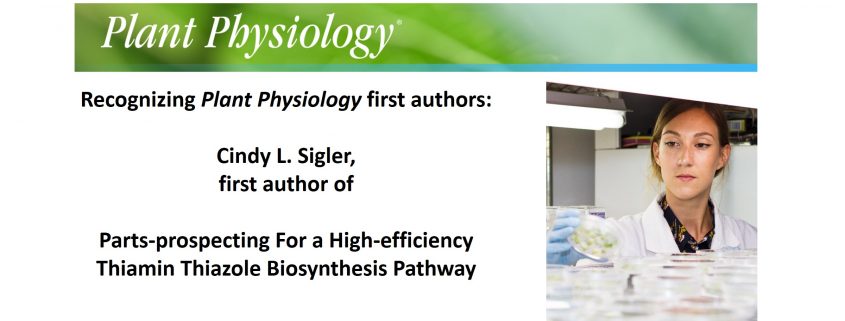Recognizing Plant Physiology first authors: Cindy L. Sigler
Cindy L. Sigler, first author of Parts-prospecting For a High-efficiency Thiamin Thiazole Biosynthesis Pathway
Current Position: Graduate Research Fellow, University of Florida, Gainesville, Florida
Education: B.S. (2016) in Plant Science, University of Florida, Gainesville Florida
Non-scientific Interests: Cycling, kayaking, dancing, and insect curation
Brief bio: In high school, I began working as a research assistant in Dr. Jude Grosser’s laboratory under supervision of Dr. Manjul Dutt at the UF/IFAS Citrus Research & Education Center in Lake Alfred, Florida. I received hands on experience from transforming citrus rootstocks in the laboratory to collecting and preserving potential citrus greening-tolerant germplasm from the field. After my acceptance into the University of Florida in Gainesville, Florida, I began working in Dr. Thomas Colquhoun’s plant biotechnology laboratory that focused on biochemistry and metabolomics of fragrance and flavor of horticultural crops. After the gratifying experiences I had working with citrus of being surrounded by the smell of orange blossoms and tasting novel citrus varieties, this new opportunity sounded especially enticing.
For my undergraduate research, I began teaming up with a few citrus breeders to work on identifying and suppressing perceived-bitter volatiles in grapefruit. I also gained an understanding of phenylpropanoid and benzenoid metabolism that makes up the fragrance profile of Petunia x hybrida. I am currently a doctoral fellow in Dr. Thomas Colquhoun’s laboratory with a research focus on floral volatile characterization with special emphasis on insect/microbe-plant interactions. My research projects involve utilizing molecular biology and biochemistry to understand important volatile compound biosynthesis and function in Petunia x hybrida and Caladium bicolor. During my graduate studies, my interests have expanded to understanding how environmental factors, such as specific narrow-bandwidth light waves and pollinator syndromes, can regulate organic carbon flux in floral volatile pathways.




